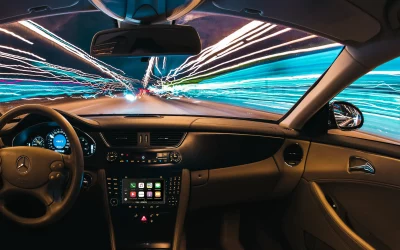In the evolving landscape of vehicle detection technologies, the spotlight is increasingly turning to LiDAR, and for good reason.
Why, you may ask?
Let’s jump into the particulars that set LiDAR parking technologies apart. Specifically when compared to the common use of cameras in terms of vehicle detection and parking management solutions. LiDAR is used for many purposes, however Frogparking particularly harness it’s power within their parking guidance systems and their parking barrier arms.
First and foremost, LiDAR outshines cameras in the realm of vehicle detection. It tackles the challenges posed by the myriad of shapes, sizes, and colors of vehicles.
Camera systems are prone to vibration, which can cause them to report inaccurate information. There are several reasons for this, for example, high wind or traffic can cause issues with camera accuracy. Talk to anyone within the parking & mobility industry. You will be sure to hear a story (or two) about the inaccuracy of camera vehicle detection systems. LiDAR is superior as it can handle a few bumps because it takes smaller, more precise measurements.
Secondly, LiDAR performs better under different lighting conditions.
LiDAR is significantly less sensitive to the change in lighting conditions as the operating principle is different. Changing light levels, especially around dawn and dusk, interfere with a camera’s baseline for measuring a ‘vacant space’. As a result of this, there are some wild readings from camera vehicle detection systems. Comparatively, LiDAR looks at a distance, which is a far more stable measure. We have a lot of comparison data showing cameras falsely detecting hundreds of vehicles a day at dawn and dusk. Please reach out if you want to see this.
Thirdly, LiDAR data is less complex than image data from a camera.
This simplifies processing requirements for some applications. LiDAR captures physical shapes and structures instead of detailed visual information. Thus reducing parking privacy concerns compared to cameras. Also, all the processing is done at the unit, so it simply sends occupancy metadata to the cloud. LiDAR doesn’t need complex and expensive data cabling and algorithms, off-site processing, or space to install an onsite server. LiDAR detection is all done locally. In fact, local detection of transition events in under six seconds. This is helpful when you think about the global impending changes to both data & privacy law changes.
Lastly, LiDAR is transparent – you get what you pay for.
We have recently seen a surge in camera companies often suggesting the camera feeds can be used for security. Generally, this is inaccurate based on our experience, and common complaints we hear from customers transitioning to Frogparking. We often hear that either their previous cameras are too low resolution to actually see anything, or the effort and data involved in up linking all cameras is prohibitive. Not to mention that camera equipment is generally more expensive to install and run. Good cameras, and their software, carry large capex and opex maintenance costs. Be aware of this & factor it into the overall cost of your parking management solution.
In summary, when you need to upgrade or refresh your smart parking system, specifically for vehicle detection systems, consider what you really want to achieve. Consider picking a product that is elegant in its simplicity. Don’t get sucked into the pipe dream of a ‘single product that makes all your dreams come true’. Lest you get caught out with all the hidden caveats making it a nightmare.
LiDAR is superior at detecting vehicles. It works in a wider variety of lighting conditions. It poses far less risk around impending data security & privacy law changes. And lastly, is a better value-for-money option.

0 Comments